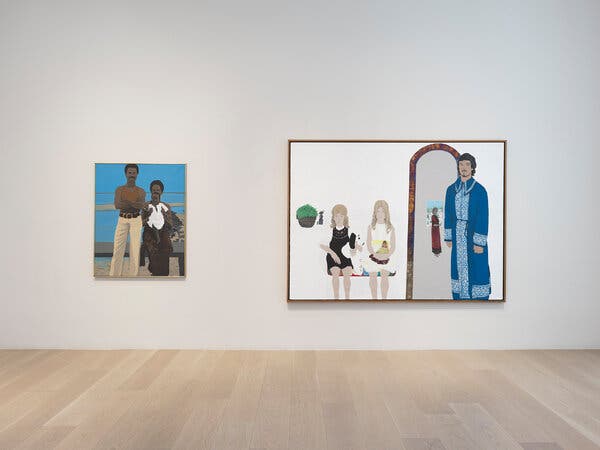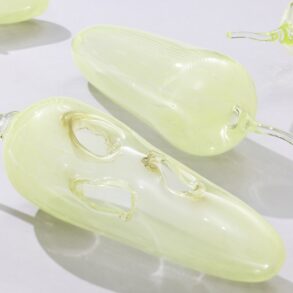Saara Pritchard, an art adviser, was visiting a friend in Miami when a painting in the bedroom caught her eye. Bordered in silver leaf, it was a close-cropped, black-and-white image of John F. Kennedy, eyes skyward and mouth slightly agape. The haunting image resembled a death mask — as if made by the love child of Andy Warhol and the Surrealist Giorgio de Chirico. Who, Pritchard wondered, had painted it?
The answer was Marcia Marcus, a popular artist in the downtown New York scene in the 1960s and ’70s who had since faded from view. Pritchard, 40, set out to learn everything she could about Marcus. Within a year she was standing in the home of one of the artist’s daughters, Jane Barrell Yadav, in Yonkers, N.Y., who had more than 200 of her mother’s canvases. The paintings were packed tightly in closets and makeshift storage racks in the living room.

Through June 21, many of those artworks are on view at Lévy Gorvy Dayan, a stately Upper East Side gallery, as part of “The Human Situation,” an exhibition conceived by Pritchard that put Marcus’s work in dialogue with two better-known female painters from the era, Alice Neel and Sylvia Sleigh. Over the past two and a half years, Pritchard has worked alongside Barrell Yadav and her sister Kate Prendergast to piece together Marcus’s story in the hope of turning her from an art-historical footnote into a blue-chip star.
Marcus is among a growing group of artists who have benefited from what could be called “the rediscovery industrial complex”: a cottage industry within the art market that looks to the past to find figures — often women and artists of color — neglected by the establishment. By repackaging them for a contemporary audience, savvy dealers hope to enrich the art-historical canon even as they make a healthy profit.
The upside can be considerable. Consider the case of the painter Lynne Drexler, who lived on a remote island in Maine. Before she died in 1999, she sold her work to tourists for as little as $50. In recent years, her lyrical landscapes have sold for more than $1 million at auction.
This post was originally published on this site be sure to check out more of their content







